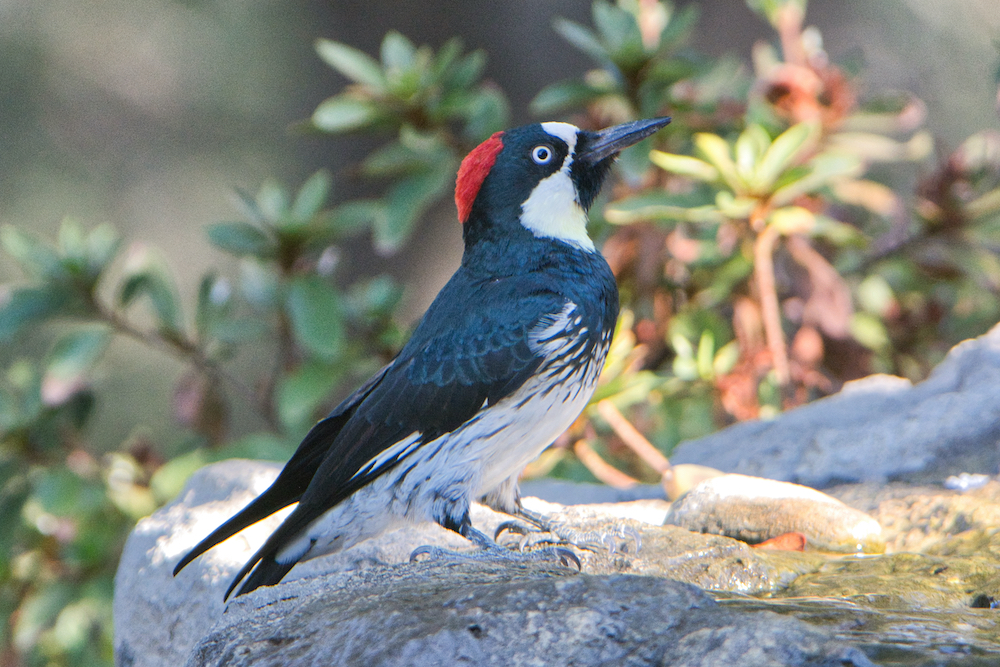
Acorn Woodpecker Female
Dr. Walt Koenig was a Research Zoologist at Hastings Reservation, a field station located in the upper Carmel Valley run by the Museum of Vertebrate Zoology at UC Berkeley, from 1982 to 2008. He subsequently was a Senior Scientist at the Cornell Lab of Ornithology in Ithaca, New York, from 2008 to 2016. He retired in 2016 and returned to upper Carmel Valley, where he currently studies acorn production by California oaks and continues to contribute to the Acorn Woodpecker study.
Acorn woodpeckers, best known for their unique habit of storing acorns by the thousands in special structures known as “granaries,” exhibit one of the most complex social systems of any bird. Family groups of this species, sometimes numbering a dozen or more birds, contain multiple breeders of both sexes, a rare phenomenon called “polygynandry,” along with young from prior years that serve as “helpers-at-the-nest.” Based on a study of this species at Hastings Reservation in Monterey County, Dr. Koenig will explain some of the strikingly cooperative and surprisingly competitive behaviors of this species that he and his colleagues have discovered during their 50+ year field study.
Wintu Audubon Society is inviting you to a scheduled Zoom meeting.
Topic: Dr. Walt Koenig, Cooperation and Conflict in the World of Acorn Woodpeckers
Time: Nov 9, 2022 07:00 PM Pacific Time (US and Canada)
Join Zoom Meeting
https://us06web.zoom.us/j/85196519044
Meeting ID: 851 9651 9044
One tap mobile
+12532158782,,85196519044# US (Tacoma)
+13462487799,,85196519044# US (Houston)
Dial by your location
+1 253 215 8782 US (Tacoma)
+1 346 248 7799 US (Houston)
+1 669 444 9171 US
+1 669 900 6833 US (San Jose)
+1 719 359 4580 US
+1 386 347 5053 US
+1 564 217 2000 US
+1 646 931 3860 US
+1 929 205 6099 US (New York)
+1 301 715 8592 US (Washington DC)
+1 309 205 3325 US
+1 312 626 6799 US (Chicago)
+1 360 209 5623 US
Meeting ID: 851 9651 9044
Find your local number: https://us06web.zoom.us/u/koRNv6iU
